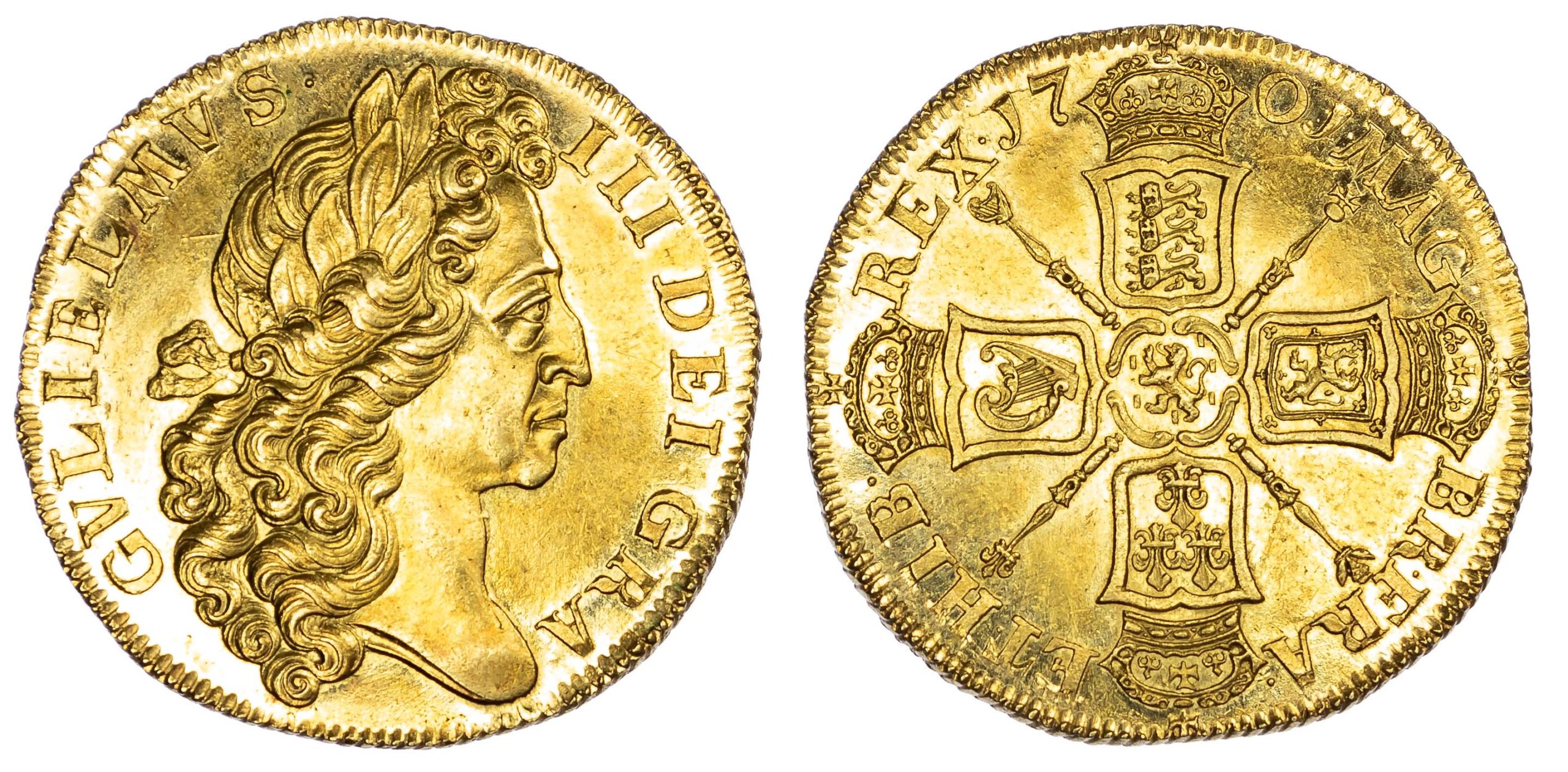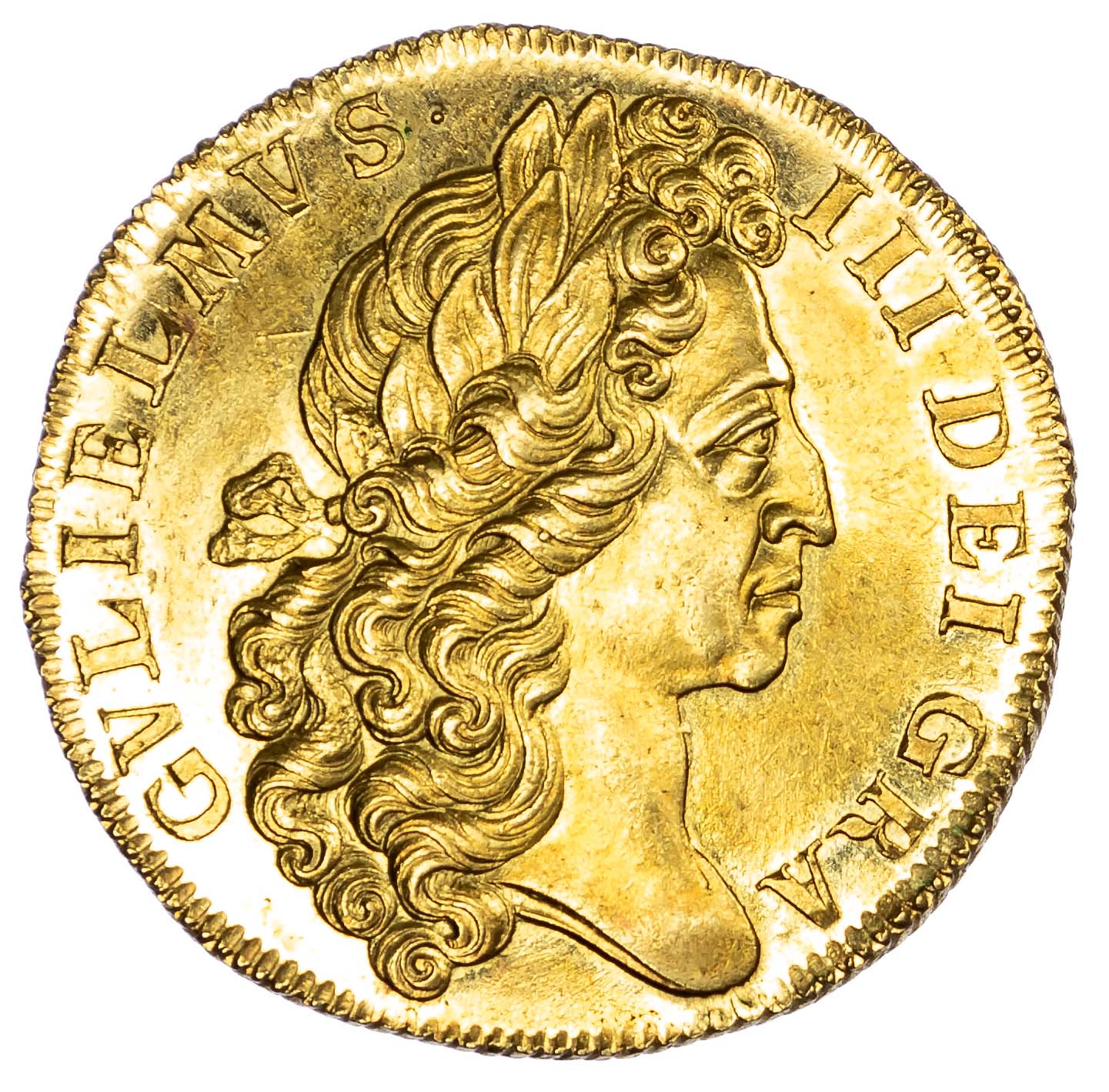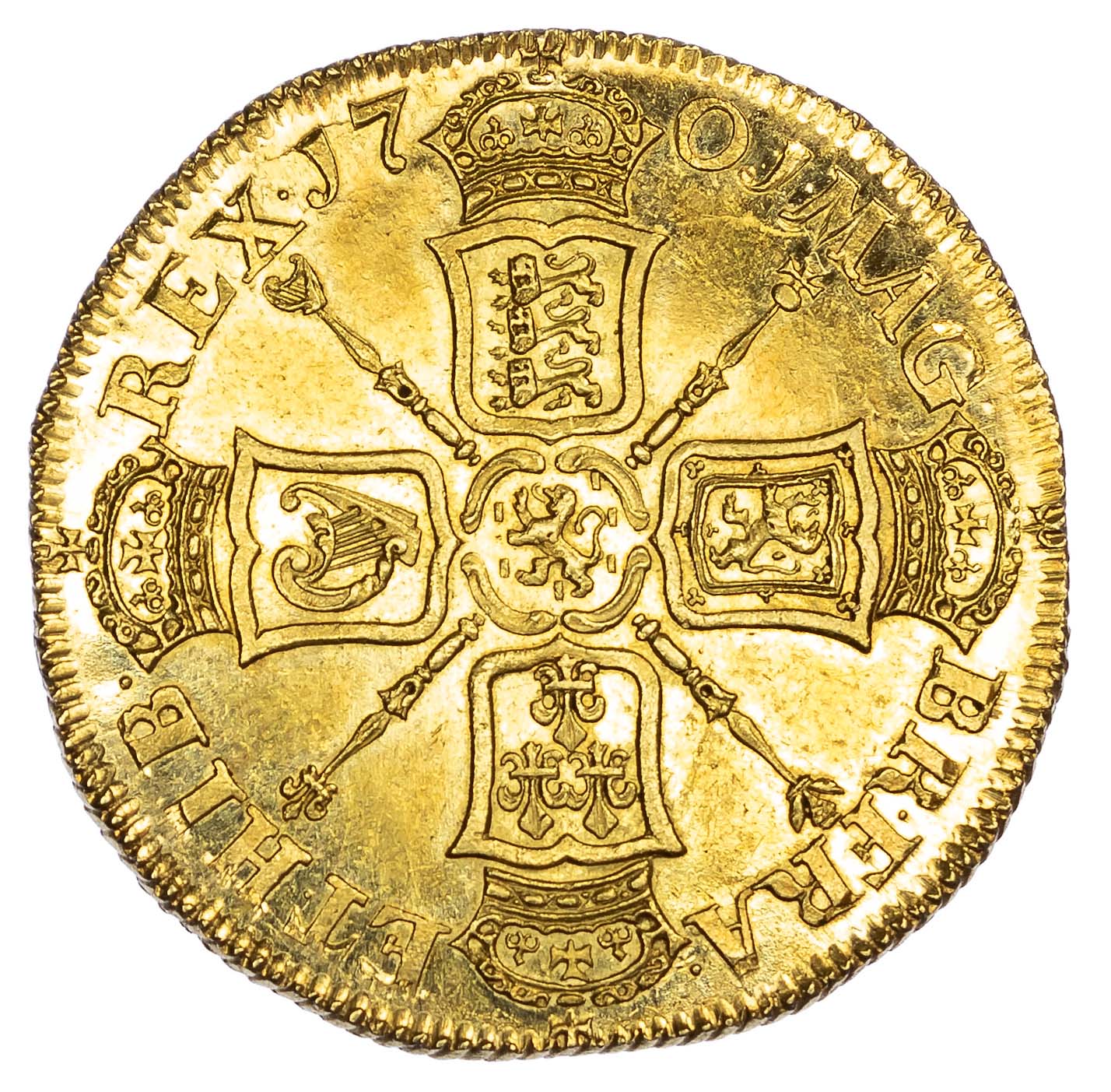Description
William III (1694-1702), ‘Fine-Work’ Two-Guineas dated 1701, laureate head right, toothed borders both sides, legend commences GVLIELMVS III DEI GRA, no stop after GRA. Rev, crowned shields cruciform, emblem-adorned ornamental sceptres in angles, Lion of Nassau at centre, date flanking top crown, reads MAG BR FRA ET HIB REX, edge obliquely milled, 16.78g (S.3457; Schneider II, 482; MCE 173).
A superlative example in mint state, exemplifying if not epitomising all the characteristics associated with the ‘Fine works’ series. Proof-like rich and equally lustrous fields, complimented by an imposing and elaborate bust fully struck up in an almost tangible relief. In the King’s portrait the striations of each individual hair curl clearly visible, a razor sharp double lined truncation helps frame the portrait. An equal level of attentiveness given to the profile, with pupil of the eye seemingly fixed in a pensive state. The reverse regal, simple and yet simultaneously filled with heraldry and distinction. The four cruciformed shields exhaustively precise, with six strings to the Irish harp, English and Scottish shields again perfectly well centred containing intricate details, the fleur de lis full and in a high definition set against impressive segmented ornamental sceptres. Six lozenges surrounding the Lion of Naussau encased within a scroll like cartouche.
Coruscating golden lustrous toning on both obverse and reverse, complimenting the intricate details of the piece, mirrored fields synonymous with a Proof or specimen strike. An outstanding example of this one year only type, rare so well preserved, fastened to an illustrious set of provenances.
The Chalaza Collection Spink 91, 1 May 1992, lot 69
Vente Bale (Switzerland), 30 May 1974, lot 165 – CHF 32,000
Spink Numismatic Circular, March 1971, no. 2839 – ‘mint state’ – £565
Spink Numismatic Circular, September 1970, no. 9315
‘Fine works,’ Five and Two Guinea pieces were issued initially in 1701 as one year only types. Deeply engraved specialised dies helped create spectacular levels of portraiture, giving these coins a relief normally associated with medallions. Sir Isaac Newton has been attributed as being central in the creation of these ‘Fine-works’ denominations, while working in his position of master of the mint.
Newton, best known for his revolutionary scientific theories, discoveries and inventions. However, he was also a keen politician. As Master of the Mint from 1699, Newton helped facilitate Queen Anne’s new coinage from 1702 and was also integral in organising or joining together English and Scottish coinage post the Act of Union in 1707. He gave special focus and attention to battling counterfeiting while introducing new technology and a methodology to improve the efficiency and quality of coin production. The ‘Fine Work’ coinage is perhaps a direct result of Newton’s inclination to produce some of the finest quality coins, along with the ability and application of the engraver John Croker.
Croker’s talents were almost immediately recognisable, a German master jeweler born in Dresden, Saxony who migrated to England, known in his native tongue as Johann Crocker. In a short space of time he had built up a reputation of exemplary skill, dedication and talent for both coins and medals. The Fine works is perhaps the high point of his engraving, he is also accountable for the well known ‘flaming hair’ shillings. From 1705 he became the chief engraver to the Royal mint until his death. The close working relationship he and Newton fostered has been well documented, culminating essentially in these fine work pieces. Croker is also known for a whole back catalogue of fine medals, generally he is perceived as a master of his craft, if not a virtuoso in relation to his skill set.
William III, born 4th November 1650 at the Hague, Holland to William II of Orange and Mary Stuart (daughter of Charles I). A descendant of the ancient house of Nassau (hence the Lion of Nassau struck in the centre of the coins reverse) in Germany, and the great grandson of William the Silent, Prince of Orange, who became Stadtholder (or chief executive) of the Netherlands in 1572. Nephew to James II. Died 8th March 1702 at Kensington Palace aged 51.





